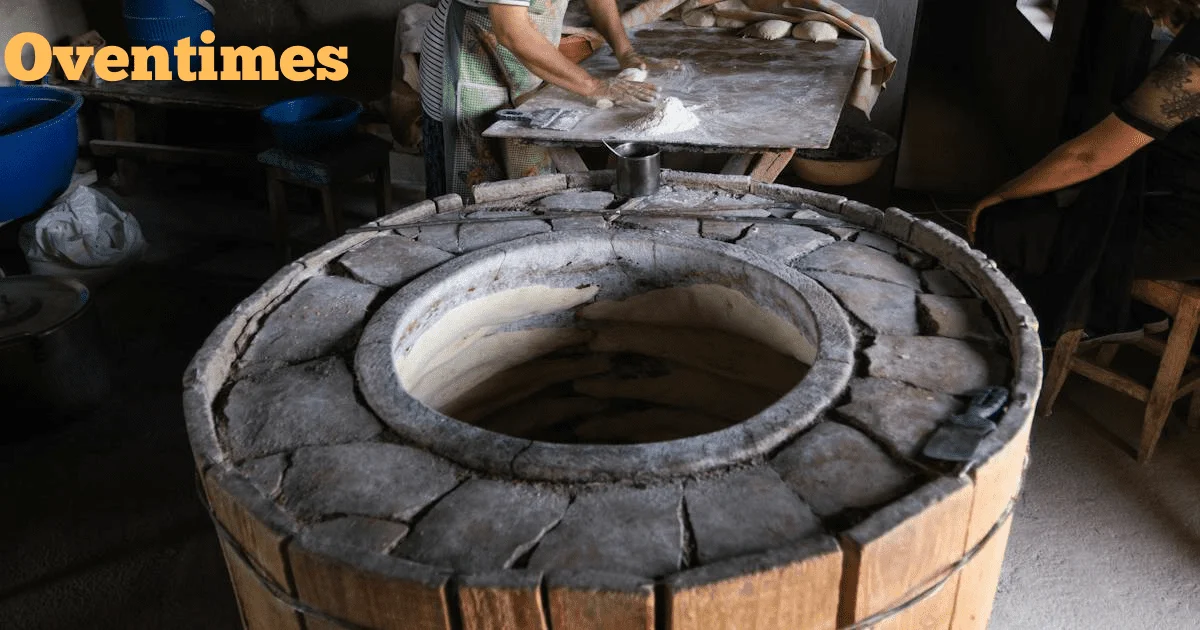A tandoor oven, also known as a tandoori oven, is a cylindrical clay or metal oven used in cooking and baking.
Tandoor ovens are commonly found in India, Pakistan, Afghanistan, Iran, Armenia, Bangladesh, Turkey, Central Asia, the Middle East, and other parts of South Asia.
The tandoor oven likely originated over 5000 years ago in the Indus Valley civilization in what is now modern-day Pakistan and northwestern India.
Early tandoor ovens were simply holes dug in the ground and heated by burning wood or charcoal. Over time, the design evolved into above-ground cylindrical ovens made from clay or brick.
The unique shape and heating method of the tandoor allow for cooking meats and breads quickly at high temperatures while imparting a smoky, charred flavor.
Today, tandoor ovens are a staple in many cuisines and are gaining popularity around the world as people discover their versatility, flair, and delicious results.
How Do Tandoor Ovens Work?
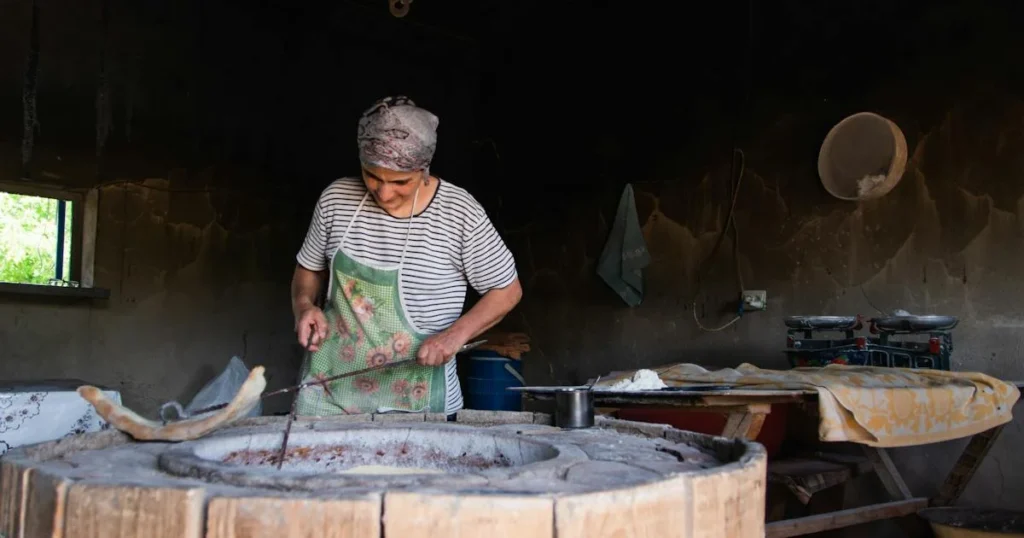
Tandoor ovens work by using a high-heat cooking method to quickly cook food over a live fire or other heat source. Here is an overview of how tandoor ovens function:
- Cylindrical shape: The oven is a tall cylinder made from thick clay or metal. This shape contains the smoke and heat while allowing excess moisture to drip out of the food.
- Heat source: Traditional tandoors use charcoal or wood burned directly inside the oven. Modern ovens may use gas or electricity for more convenient temperature control.
- High heat: Tandoor ovens reach temperatures between 900°F-1000°F. The food cooks rapidly in this intense dry heat.
- Skewered items: Food is pierced on long skewers that are inserted vertically into the oven. The skewers allow the food to cook evenly without burning.
- Convection heating: Hot air circulates rapidly around the food from the bottom vents. This convection heat cooks the food quickly and evenly.
- Smoky flavor: The charcoal or wood heat source imparts a desirable smoky barbecue flavor to the food.
- Clay walls: The thick clay holds in the heat and radiates it back to the food. Clay also absorbs excess moisture and fat drippings.
- Crust/char: The high heat chars or crisps the exterior of meats, vegetables or breads before the interior overcooks.
The combination of conduction from the skewers, convection from the air flow, radiant heat from the clay walls, and smokiness from the coals allows tandoor ovens to cook foods incredibly fast while infusing them with a unique smoky flavor.
Advantages of Tandoor Ovens
Tandoor ovens provide several advantages over other cooking methods:
- High heat cooking: Seals in juices and flavors quickly
- Versatility: Can cook meats, seafood, vegetables, breads, and more
- Enhanced flavors: Imparts a delicious smoky charred flavor
- Moist interior: Food stays moist and tender inside
- Low fat: Excess fat drips out while cooking
- No added oil needed: Uses dry heat so little to no oil required
- Fun presentation: Items skewered and emerging vertically from the oven
- Authentic ethnic cuisine: Central to many Asian and Middle Eastern dishes
History and Origins of the Tandoor Oven
The earliest evidence of tandoor ovens dates back over 5000 years to the Indus Valley Civilization in modern-day Pakistan and northwest India.
Indus Valley Origins
- Excavations show fire-baked clay tandoors from 3000 BCE.
- Used for baking flatbreads and cooking meats.
- Early ovens were holes in the ground heated by wood or charcoal.
- Provided efficient enclosed cooking with clay as heat sink.
Spread Through South Asia and Middle East
- Use moved west through Persia and into the Middle East.
- Remains a staple of Afghan, Armenian, Turkish, and Persian cooking today.
- Evolved into enclosed above-ground clay ovens.
- Adapted for baking naan and cooking tandoori chicken in India.
Globalization Through Immigration
- Spread from South Asia to Europe, North America via immigration.
- Became popular in Europe and North America by late 20th century.
- Now featured in many Indian, Pakistani, and Middle Eastern restaurants worldwide.
- Sets these cuisines apart from other ethnic restaurant types.
While origins trace back millennia, the tandoor remains an indispensable tool in many cuisines today and continues to grow in popularity globally for its versatility, flair, and delicious cooking results.
| Time Period | Region | Development |
|---|---|---|
| 3000 BCE | Indus Valley | Earliest known fire-baked clay tandoor ovens |
| 1000 BCE | Persia, Middle East | Adopted in Persian and Middle Eastern cooking |
| 500 BCE | India | Enclosed tandoor design developed |
| 1947 CE | Indian subcontinent | Tandoor ovens spread via immigration |
| 1970s CE | North America, Europe | Gained popularity in Western restaurants |
| Today | Global | Featured worldwide in many cuisines |
What Can You Cook in a Tandoor Oven?
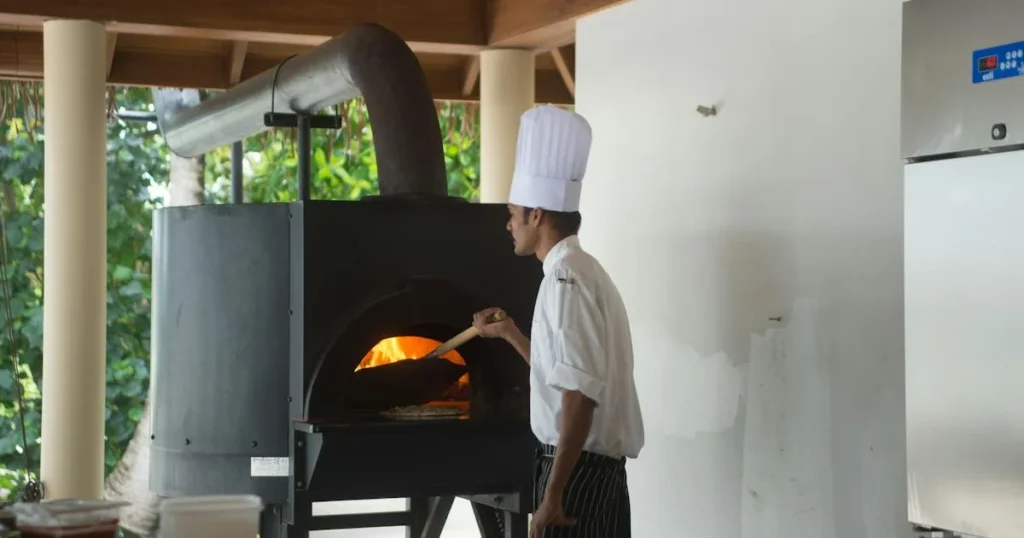
Many dishes across Asia and the Middle East are traditionally cooked in the intense heat of a tandoor oven. Here are some of the most popular foods cooked in a tandoor:
Breads
- Naan
- Roti
- Kulcha
- Lavash
- Pita
Meats
- Tandoori chicken
- Chicken tikka
- Beef kebabs
- Lamb chops
- Pork tenderloin
Seafood
- Tandoori shrimp
- Fish tikka
- Salmon
- Lobster
Vegetables
- Tandoori cauliflower
- Paneer tikka
- Mushrooms
- Onions
- Potatoes
Other
- Paneer (cheese)
- Paneer tikka masala
- Aloo gobi (potato & cauliflower)
- Papadum (lentil crisps)
The high heat of the tandoor allows marinated meats, seafood, and vegetables to char quickly while staying moist inside. Breads like naan can adhere directly to the oven walls where they cook and puff up in seconds. Even typically dense vegetables lighten up and become imbued with a smoky essence.
Almost any food can be adapted to cook in the tandoor oven by cutting items into smaller pieces, marinating them well, and skewering before cooking. The possibilities are endless!
Tandoor ovens have evolved over the millennia from simple pits to sophisticated closed vessels. Here are some of the most common modern tandoor styles:
Traditional Clay Ovens
- Cylindrical shape made from clay or firebrick.
- Interior is coated with clay plaster or sand.
- Heated by wood or charcoal burning inside oven.
- Reaches temps up to 1000°F.
- Imparts an authentic smoky flavor.
- Heavy and not highly portable.
Electric Tandoors
- Made from a metal cylinder with electric coils.
- Temperature is adjustable via thermostat.
- Heats up and cooks food quickly.
- Does not provide smoky flavor from real wood or charcoal.
- More convenient and easier to use than traditional ovens.
Outdoor Tandoors
- Large clay tandoors designed for outdoor use.
- Used at restaurants for theatrical visible cooking.
- Fire is started several hours before to preheat.
- Showcases chef’s skills in operating oven and skewers.
- Provides interactive entertainment for dining guests.
Portable Tandoors
- Small tabletop electric or propane models.
- Made from lightweight metal for portability.
- Reach high temps for authentic tandoori cooking.
- Great for home use, camping, tailgating, etc.
- Offer convenience of tandoor in a compact size.
While traditionalists insist on the smoky flavor only provided by wood/charcoal heated clay tandoors, modern electric and portable versions make tandoori cooking more convenient and accessible than ever.
Common Ingredients and Spices in Tandoori Cooking
Tandoori dishes are bursting with flavor partially from a marinating process using aromatic spices and yogurt. Here are some key ingredients used:
Yogurt – Contains enzymes that tenderize meats. Adds moisture, flavor, and tang.
Spices – Chili powder, coriander, cumin, garam masala, saffron, ginger.
Salt – For flavor enhancement and moisture retention.
Lemon juice – Adds bright acidity to balance and marinate.
How to Make Tandoori Chicken at Home
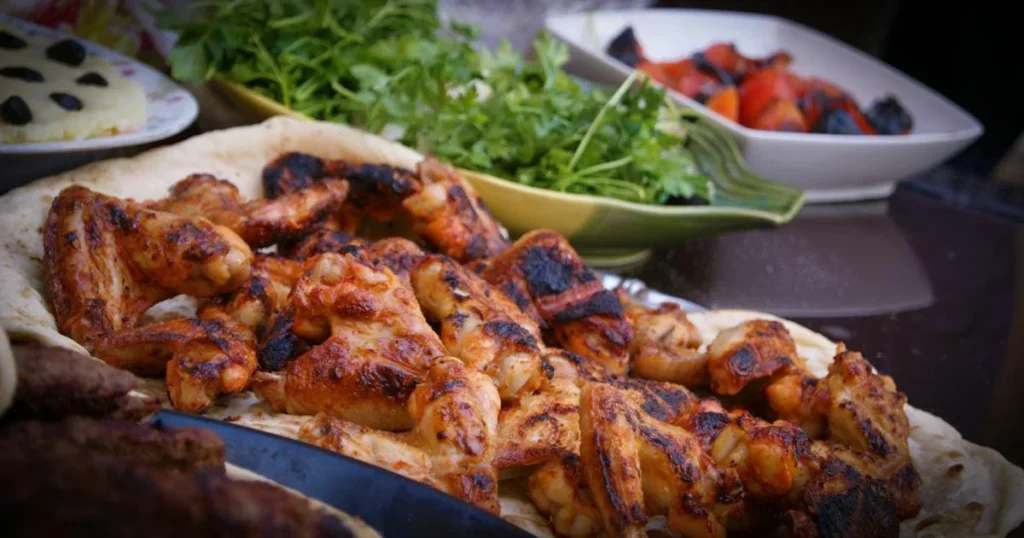
Tandoori chicken is one of the most popular and recognizable Indian dishes. With the right preparation and technique, you can make delicious tandoori chicken at home even without a traditional tandoor oven.
Ingredients
- Chicken legs and thighs, skin removed
- Plain yogurt
- Juice of 1 lemon
- 3 tablespoons vegetable oil
- 3 cloves garlic, minced
- 1 inch piece fresh ginger, grated
- 1 tablespoon chili powder
- 2 teaspoons garam masala
- 1 teaspoon cumin
- 1/2 teaspoon turmeric
- 1 teaspoon salt
- Chopped cilantro for garnish
Marinating the Chicken
- Make cuts in the chicken pieces to allow flavors to permeate.
- In a bowl, combine yogurt, lemon juice, oil, garlic, ginger and all spices.
- Add chicken and coat well with marinade. Cover and refrigerate for 2-24 hours.
Cooking the Chicken
- Preheat oven to 450°F. Line a baking pan with foil.
- Place chicken on pan and discard excess marinade.
- Bake for 20-25 minutes, turning once, until cooked through.
- Turn on broiler and broil chicken 3-4 minutes until charred and crispy.
- Garnish with cilantro and serve with naan or rice.
With the right marinade and oven technique, you can achieve excellent tandoori flavors at home without specialized equipment. Adapt the recipe to use a grill or outdoor tandoor for even more authentic results.
5 Best Tandoori Oven Brands
For home cooks looking to purchase a tandoor, here are 5 top rated brands to consider:
. Kalamazoo Outdoor Pizza Oven – Tandoor Combo
- High quality brick and mortar construction.
- Wood fired for authentic flavor.
- Reaches temps up to 800°F.
- Includes pizza oven side.
- Wheels for portability.
. NutriChef Electric Tandoor Oven
- Affordable electric model.
- Heats to 450°F.
- Compact 20″ size for countertops.
- Temperature dial and timer.
- Stay cool exterior.
. Maxwell & Williams Portable Tandoor
- 34L x 20W x 38H inches.
- Propane fuelled.
- Wheeled stand with locking castors.
- Reaches up to 900°F.
- For indoor/outdoor use.
. The Americana Open Grill Tandoor
- 33L x 33W x 60H inches.
- Charcoal fired.
- Cast iron interior with steel exterior.
- Commercial grade for restaurants.
- Authentic clay tandoor design.
. Behmor Portable Tandoor
- Electric tabletop model.
- Temperature control up to 450°F.
- Aluminum interior for even heating.
- Compact 15.5″ height.
- Carry handles for transport.
From premium outdoor models to budget friendly electric options, there is a high quality tandoor oven suited for just about any cooking need and budget.
Tandoori Cooking Tips and Tricks
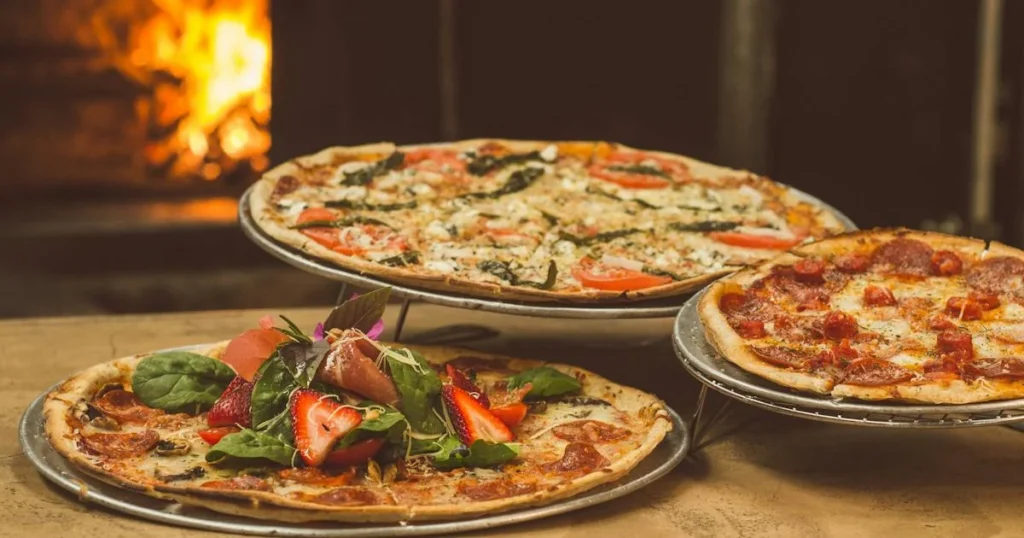
- Marinate overnight: Allowing time for the yogurt and spice marinade to work enhances flavor.
- Cut it small: Cut ingredients like chicken and vegetables into bite size pieces for fast, even cooking.
- Blot marinade: Blot off excess marinade before cooking so it doesn’t burn.
- Use skewers: Metal or soaked bamboo skewers ensure items cook evenly.
- Mind the heat: Keep an eye on thinner items which can burn quickly in the high heat.
- Garnish with lime: A fresh lime squeeze just before eating enhances flavors.
- Embrace the char: Don’t fear the dark charring on meats and veggies – it adds authentic smoky depth.
- Pair with naan: Use naan or other flatbreads to soak up those flavorful juices.
- Adjust heat: If using electric/gas tandoors, adjust temperature based on size of food items.
With a few simple tricks, you can master cooking in a tandoor oven. Just take your time to marinate, skewer, and char your meats, seafood, vegetables and breads for finger-licking results!
Conclusion
With a rich 5000 year history yet still growing in popularity today, the tandoor oven’s unique cooking method delivers unmatched results.
The dry convection heat, smoky charcoal flavor, and theatrical skewered presentation make tandoori dishes irresistible.
From classics like tandoori chicken to creative seafoods, vegetables and breads, the possibilities are endless in the hands of skilled chefs and home cooks alike.
While traditional clay ovens require an investment, more convenient electric and portable options are also available to bring the fun and flavors of tandoori cooking to your own kitchen.
With the right ingredients, preparation, and techniques, anyone can master the art of tandoor cooking to create healthy, flavorful feasts.
Frequently Asked Questions
Here are some frequently asked questions given below:
What temperature does a tandoor oven reach?
Traditional wood or coal fired tandoor ovens reach between 900-1000°F. Electric and gas ovens designed for home use typically reach a maximum temperature of 450-500°F.
How is tandoor different from other ovens?
The high direct heat, skewer cooking method, and smoky flavor from charcoal or wood distinguish tandoor ovens from regular convection ovens. The result is tender and moist interior meats/veggies with a charred smoky crust.
Is cooking tandoori hard?
While intimidating for beginners, cooking in a tandoor oven is quite simple once you get the hang of skewers and heat levels. The marinating technique is key for flavor and moisture.
Is tandoori healthier?
Cooking in a tandoor often requires minimal added oils. Meats have excess fat drippings removed while cooking. This can make tandoori dishes relatively healthy.
Does a tandoor oven need special maintenance?
For clay tandoor ovens, re-coating interior clay surfaces annually will help preserve the life. Otherwise, mainly general cleaning between uses and removing ash buildup from vents.
